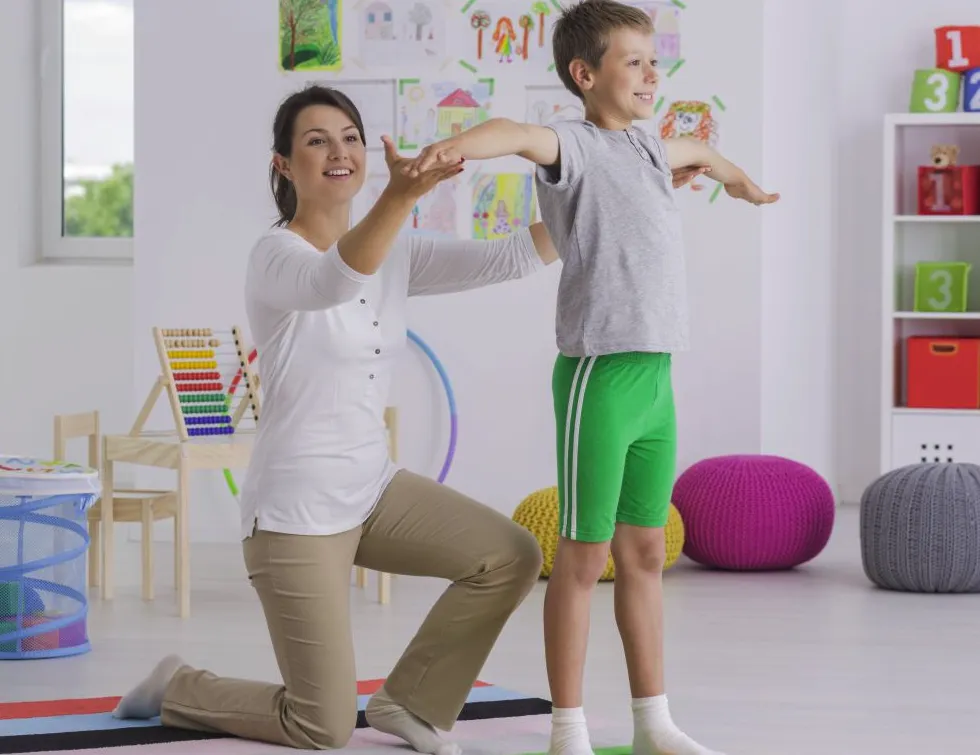Milestones For Babies: The Red Flags Each Parent Should Know By 6 Months
By Dr. Tamra Rutfield, Pediatric Physical Therapist
At six months old, there are a series of developmental indicators that may indicate that your baby may need a little bit of help. As health professionals, we are able to identify any red flags during our initial assessment.
Certain milestones, or developmental benchmarks, help us identify and treat potential problems early, which will reduce the domino effect that delays can have. Infants are learning for the first time, and ensuring proper habits and patterns from day one can decrease the length of need for therapeutic services. As parents, you are in the best position to notice these red flags, if they occur. But you’ll only be able to recognize them if you know what to look for. So, let’s walk through each of these red flags, how you can identify them, and what they might mean.
Before we jump in, remember that if your baby was born early, it’s based on their corrected age, not their birth age.
Gross Motor Function Red Flags in the First 6 months
Torticollis
The first gross motor red flag is if your child’s head tilts to one side. When your baby is sitting, lying down, or on their tummy, they should be able to rotate their head equally to both sides and be centered when not purposely turning their head. If your baby’s head tilts to one side, or they have a strong preference for looking one way or using one arm, it’s a sign they should see a pediatrician or pediatric physical therapist determine if they have positional torticollis. This can cause your baby to favor one side of their body if left untreated. See our blog on the details of Torticollis HERE.
Hand Dominance
We don’t develop right- or left-handedness and preferences until the ages of three to four years old. Prior to this point, a preference is likely due to flexibility, strength, and tone differences. Your child should be able to use both the right and left sides of their body at this stage. They shouldn’t have a dominant side or a stiffer side. If there is, it is time to ask your pediatrician or a physical therapist.
Muscle Tone
The side preference described above can also be due to muscle tone. There should not be asymmetrical floppiness or rigidity in your child’s body. Reaching, kicking, rolling, and tummy time skills should be consistent and symmetrical. Muscle tone is our brain’s communication with our muscles to maintain some tension in resting postures to keep us from flopping over when relaxed. If your baby suddenly falls or seems to be inconsistent with gross motor skills, it is time to ask your pediatrician or a physical therapist.
Head Control
The fourth sign is poor head control and inability to raise their heads. When your child is lying down on their stomach in tummy time they should be able to lift their head with their arms extended and push their body off of the ground. They may also reach for toys or other objects. You should also help them to stand up and look around. This might involve supporting them around their ribcage. Once they are able to do that, their head should remain in the middle of the body so that they can look around the room. If you notice your child tilting their head in tummy time, or only looking one way, it is time to ask your pediatrician or a physical therapist.
Sitting
At six months old, most babies are starting to sit up. Your child begins by prop sitting, with hands on their legs or the floor. Soon they will begin to lift their hands up and attempt to keep their balance in sitting. Once they are able to sit, their head should remain in the middle of the body and they should be reaching both directions for toys. As their trunk continues to get stronger, they can be expected to sit without help with good trunk, arm, and head control. If you notice your child tilting their head or body in sitting or only looking one way, it is time to ask your pediatrician or a physical therapist.
Unfortunately, we can’t be everywhere. So this article was by no means a way to cause concern, stress, or anxiety for you and your newborn. This article was written to equip you with the ability to identify any potential problems for your little one and direct you to a professional. This way we can perform a comprehensive Developmental, Fine Motor, and Gross Motor assessment of your baby. From there we can develop a customized development plan to make sure your baby hits its early milestones.





